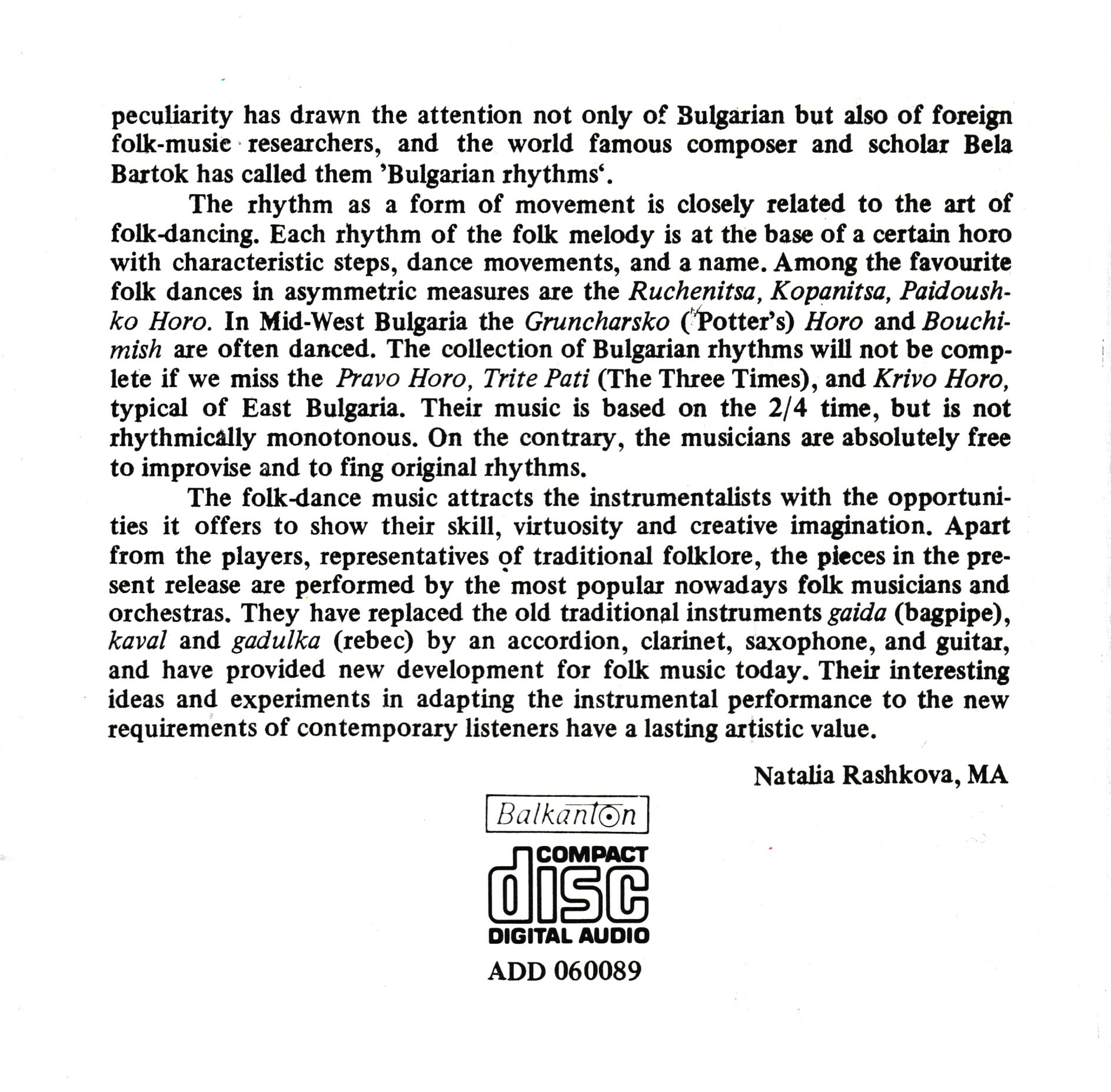1 година
За сайта



peculiarity has drawn the attention not only of Bulgarian but also of foreign folk-musie researchers, and the world famous composer and scholar Bela Bartok has called them ’Bulgarian rhythms".
The rhythm as a form of movement is closely related to the art of folk-dancing. Each rhythm of the folk melody is at the base of a certain horo with characteristic steps, dance movements, and a name. Among the favourite folk dances in asymmetric measures are the Ruchenitsa, Kopanitsa, Paidoushko Horo. In Mid-West Bulgaria the Gruncharsko (Potter’s) Horo and Bouchimish are often danced. The collection of Bulgarian rhythms will not be complete if we miss the Pravo Horo, Trite Pati (The Three Times), and Krivo Horo, typical of East Bulgaria. Their music is based on the 2/4 time, but is not rhythmically monotonous. On the contrary, the musicians are absolutely free to improvise and to fing original rhythms.
The folk-dance music attracts the instrumentalists with the opportunities it offers to show their skill, virtuosity and creative imagination. Apart from the players, representatives of traditional folklore, the pieces in the present release are performed by the most popular nowadays folk musicians and orchestras. They have replaced the old traditional instruments gaida (bagpipe), kaval and gadulka (rebec) by an accordion, clarinet, saxophone, and guitar, and have provided new development for folk music today. Their interesting ideas and experiments in adapting the instrumental performance to the new requirements of contemporary listeners have a lasting artistic value.
Natalia Rashkova, MA
The rhythm as a form of movement is closely related to the art of folk-dancing. Each rhythm of the folk melody is at the base of a certain horo with characteristic steps, dance movements, and a name. Among the favourite folk dances in asymmetric measures are the Ruchenitsa, Kopanitsa, Paidoushko Horo. In Mid-West Bulgaria the Gruncharsko (Potter’s) Horo and Bouchimish are often danced. The collection of Bulgarian rhythms will not be complete if we miss the Pravo Horo, Trite Pati (The Three Times), and Krivo Horo, typical of East Bulgaria. Their music is based on the 2/4 time, but is not rhythmically monotonous. On the contrary, the musicians are absolutely free to improvise and to fing original rhythms.
The folk-dance music attracts the instrumentalists with the opportunities it offers to show their skill, virtuosity and creative imagination. Apart from the players, representatives of traditional folklore, the pieces in the present release are performed by the most popular nowadays folk musicians and orchestras. They have replaced the old traditional instruments gaida (bagpipe), kaval and gadulka (rebec) by an accordion, clarinet, saxophone, and guitar, and have provided new development for folk music today. Their interesting ideas and experiments in adapting the instrumental performance to the new requirements of contemporary listeners have a lasting artistic value.
Natalia Rashkova, MA
